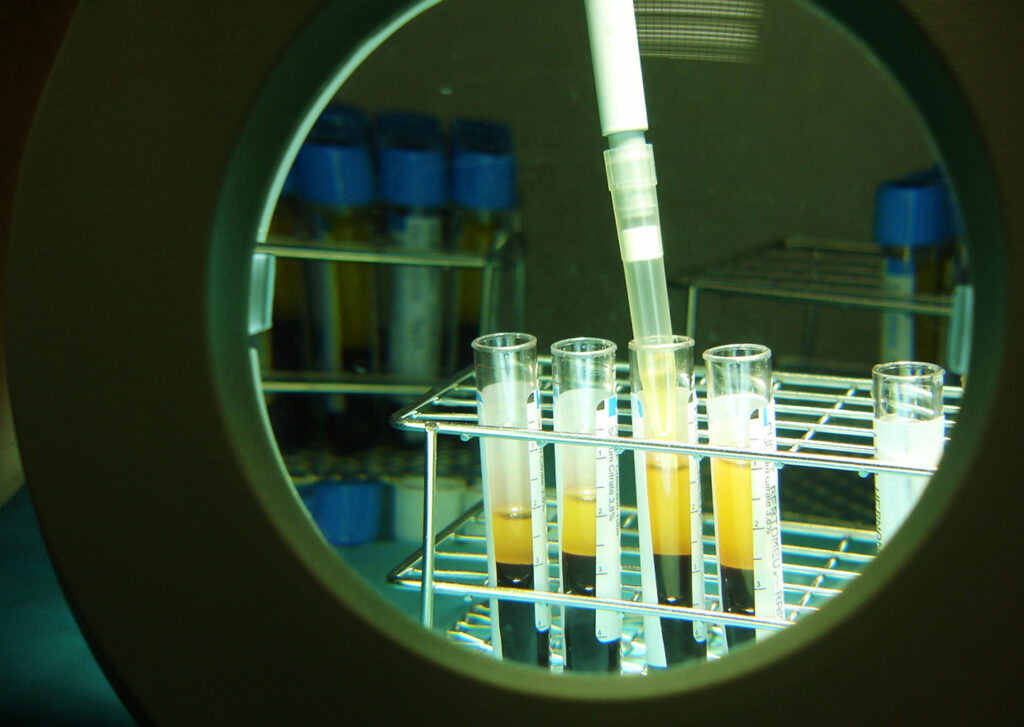Autologous platelet-rich plasma (PRP) is a research-backed biotechnology. With its increasing use in musculoskeletal injuries, orthopedic sports medicine has increasingly relied on PRP given its use in treating musculoskeletal injuries. PRP treatment involves the injection of a small concentrated volume of healing messengers from your own plasma, directly at the site of injury. The goal is tissue healing and regeneration, restoring the mechanical and functional levels of the injured area in the shortest time frame possible. Dr. Mei-Dan has performed thousands of these injections across numerous body parts and indications and is considered a world expert, being part of an invited specialized committee formed by the ‘International olympic organization’ who wrote the guidelines for the use of PRP in professional sports.
PRP treatment involves the injection of a small volume of your own plasma, directly at the site of injury. The idea is to restore the high mechanical performance and functional levels of the injured tissue in the shortest possible time.
Whole blood contains plasma, red and white blood cells and platelets. The plasma is first separated from the red and white blood cells which do not have a role in tissue healing.
The PRP fraction from within the Plasma is constituted of numerous highly concentrated growth factors secreted from large numbers of ‘activated’ platelets. The Growth factors are your own healing messenger proteins, stored within and around the platelets. These activated platelets are directed at facilitating and enhancing physiological wound healing and rapid soft-tissue, cartilage and bone regeneration.

4-6 tubes of whole blood are drawn from a vein in your arm (the same as in a common blood test). You may then take 20 mins to have something to eat and drink while the sample is processed. The blood is put through a process of centrifugation and separation of the different plasma fractions. The method we use for the separation of PRP (which is named PRGF, and was developed in Vitoria / Spain) is done under sterile conditions. The process end point is a tube containing the concentrate named PRP which will be activated with the addition of calcium chloride shortly before administration. You then come back into the treatment room for the injection into the indicated area. Depending on the area to be treated you may have the injection under ultrasound guidance. If the injured site is next to the skin (as opposed to a deep tissue layer) we do not use local anesthetic as it interferes with the PRP action. Please allow 1 hour for the whole procedure and longer for ultrasound guided treatments.
We recommend you fast for 3 hours prior to blood withdrawal in order to reduce the fat and sugar content of your plasma (you may have small amounts of water). Please avoid anti-inflammatory tablets (NSAID) including aspirin, two days prior and during the treatment period as they may counteract the action of the growth factors.
Rest the treated part for 24 hours post injection. You may drive and go back to office-type work straight away. Do not resume labor-intensive work until 3-4 days after the procedure. Take Paracetamol for post injection discomfort if needed. Do not use anti inflammatory medication (NSAID) during the treatment period.
There is a theoretical risk of infection with any injection, though the risk of infection is extremely low. As following any injection procedure, the injected area may be tender, bruised or painful for a few days, depending on the site injected. There is no risk of an allergic response to PRP or disease transmission as the platelets are your own and are not mixed with any other component of human or animal origin.